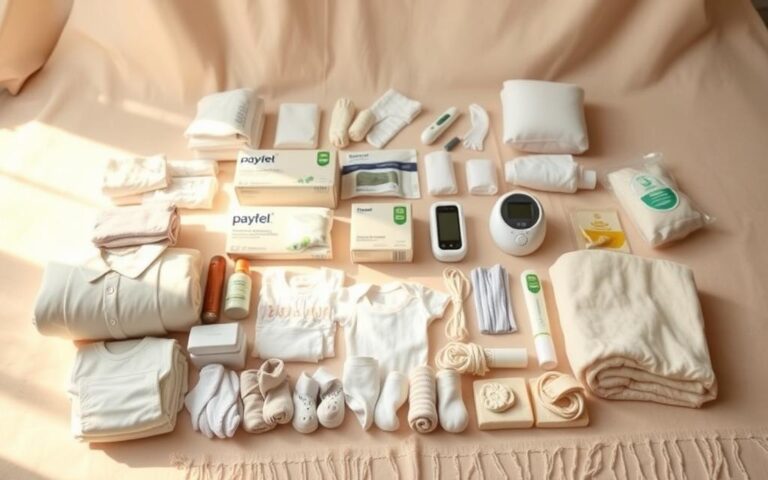Debunking Pregnancy Myths: Separating Fact from Fiction

Pregnancy comes with a whirlwind of emotions, changes, and advice—lots of advice. Unfortunately, not all of it is accurate. You’ve likely heard everything from “you’re eating for two” to “you can’t have sushi,” but how much of this is true? In this article, we’ll debunk the most common pregnancy myths so you can focus on what really matters: having a healthy, happy pregnancy.
Myth 1: You’re Eating for Two
One of the most persistent pregnancy myths is that you need to “eat for two.” While it’s true that your body needs more nutrients to support the growing baby, it doesn’t mean you need to double your food intake. In fact, during the first trimester, you don’t need any extra calories. By the second and third trimesters, you only need about 300-500 extra calories per day.
The key is to focus on the quality of your diet rather than the quantity. Nutrient-dense foods like fruits, vegetables, whole grains, and lean proteins are essential for you and your baby.
Myth 2: Morning Sickness Only Happens in the Morning
Despite its name, morning sickness doesn’t just strike in the morning. Many pregnant women experience nausea and vomiting at any time of the day or night. The good news is that morning sickness usually subsides after the first trimester, though it can last longer for some women.
To manage nausea, try eating small, frequent meals, staying hydrated, and avoiding strong smells. Ginger and peppermint tea can also help ease queasiness. For more tips on surviving the first trimester, check out First Trimester Survival Tips: A Complete Guide for Expecting Mothers.
Myth 3: You Should Avoid Exercise
Contrary to this common myth, exercising during pregnancy is not only safe but beneficial for most women. Regular physical activity can improve your mood, reduce pregnancy symptoms like back pain, and even help you during labor.
The key is to choose exercises that are safe for your stage of pregnancy. Walking, swimming, prenatal yoga, and light strength training are excellent choices. Always consult your healthcare provider before starting or continuing an exercise routine during pregnancy.
Myth 4: Heartburn Means Your Baby Will Have Lots of Hair
Heartburn is a common pregnancy symptom, but it’s not an indicator of how much hair your baby will have. Heartburn occurs because pregnancy hormones relax the muscles in your digestive system, making it easier for stomach acid to back up into your esophagus.
If you’re struggling with heartburn, avoid spicy, fatty, or acidic foods, and try eating smaller meals more frequently.
Myth 5: You Can’t Eat Sushi or Soft Cheese
While there are certain foods you should avoid during pregnancy, not all sushi and soft cheeses are off-limits. Sushi made with cooked fish is generally safe to eat. The real concern is raw fish, which can contain harmful bacteria or parasites.
As for soft cheeses, stick to pasteurized varieties to avoid the risk of listeria. Always check the labels or ask when dining out to ensure the food is safe for pregnant women.
Myth 6: You Shouldn’t Dye Your Hair
Many women avoid dyeing their hair during pregnancy out of fear that the chemicals will harm their baby. However, studies have shown that hair dye is generally safe when used correctly. If you’re concerned, opt for highlights, which minimize scalp exposure, or wait until the second trimester when the risk of chemical absorption is even lower.
Myth 7: Carrying Low Means You’re Having a Boy, Carrying High Means a Girl
This old wives’ tale is one of the most persistent myths about pregnancy. In reality, the way you carry your baby has nothing to do with its gender. The shape of your belly is influenced by factors like your muscle tone, body shape, and the position of the baby.
If you’re curious about your baby’s gender, the only reliable method is an ultrasound.
Myth 8: Pregnant Women Should Avoid Cats
The myth that pregnant women should avoid cats stems from concerns about toxoplasmosis, an infection caused by a parasite found in cat feces. While it’s true that toxoplasmosis can pose a risk during pregnancy, you don’t have to give up your feline friends.
To avoid toxoplasmosis, have someone else clean the litter box, or wear gloves and wash your hands thoroughly afterward. The risk of infection is relatively low as long as you take these precautions.
Myth 9: Cravings Indicate Nutritional Deficiencies
Cravings are common during pregnancy, but they don’t necessarily mean your body is lacking a specific nutrient. For example, craving chocolate doesn’t mean you’re low on magnesium.
However, some cravings may be linked to deficiencies. For instance, craving ice could indicate low iron levels. If you’re concerned about your cravings, talk to your doctor. In the meantime, here’s an interesting read on Why Appetite Changes During Pregnancy and Food Aversions.
Myth 10: You Can Tell the Baby’s Gender by How You’re Carrying
Another myth suggests that carrying your baby low means you’re having a boy, and carrying high means it’s a girl. While it’s fun to guess, this method is far from scientific. The only reliable way to determine your baby’s gender is through an ultrasound.
Safety Considerations and Final Thoughts
When it comes to pregnancy advice, it’s essential to consult reliable sources and your healthcare provider. Misinformation can lead to unnecessary stress or unsafe practices, so it’s always better to rely on evidence-based advice. Remember, every pregnancy is different, so what works for one woman may not work for another.
Conclusion
Pregnancy is an exciting time, but it’s also a period filled with myths and misconceptions. By debunking these myths and focusing on accurate information, you can ensure a healthier, more informed pregnancy journey. Trust your instincts, listen to your doctor, and enjoy the ride!





